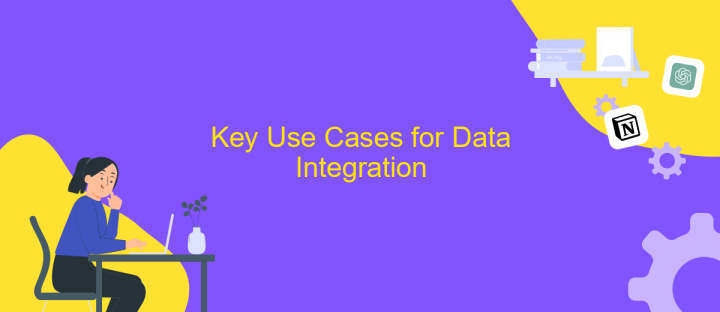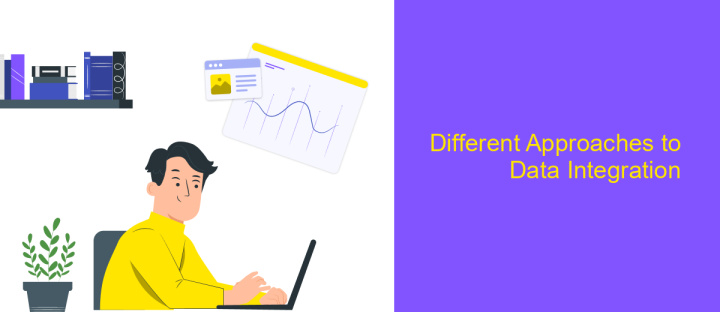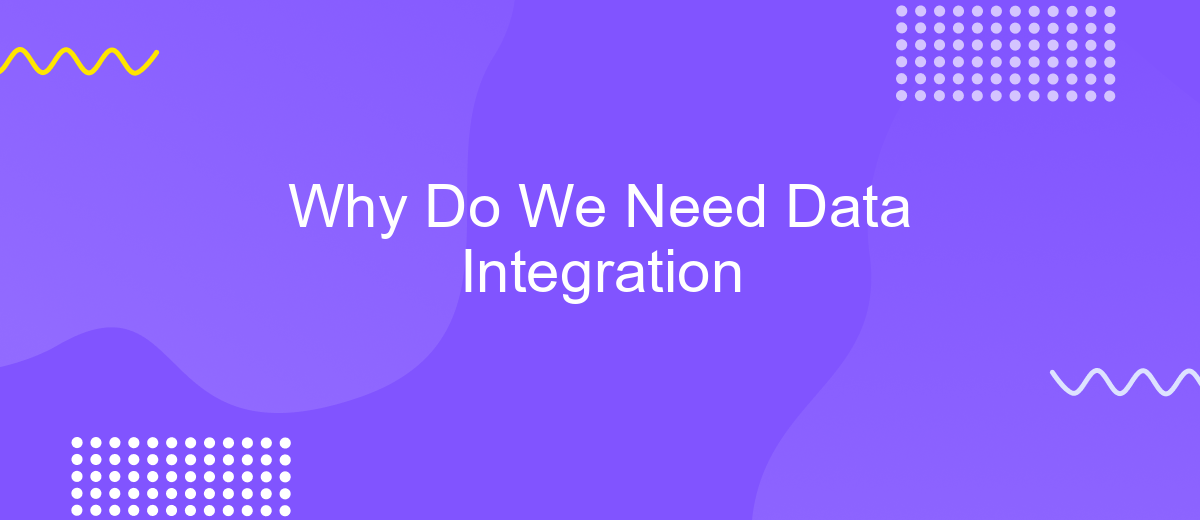Why Do We Need Data Integration
In today's rapidly evolving digital landscape, data integration has become a crucial component for businesses aiming to harness the full potential of their data assets. By seamlessly combining information from diverse sources, data integration enables organizations to gain comprehensive insights, streamline operations, and enhance decision-making processes. This article explores the importance of data integration and how it empowers businesses to remain competitive and agile in an increasingly data-driven world.
The Challenges of Disparate Data
In today's data-driven world, organizations face the daunting task of handling disparate data sources. These data silos arise from different departments, legacy systems, and various formats, making it challenging to derive meaningful insights. The lack of integration leads to inefficiencies and potential errors, hindering decision-making processes and operational efficiency.
- Data Inconsistency: Varying formats and standards across data sources can result in conflicting information.
- Data Redundancy: Duplicate data entries increase storage costs and complicate data management.
- Scalability Issues: As organizations grow, managing and integrating diverse data becomes increasingly complex.
- Security Risks: Disparate data systems may have inconsistent security measures, increasing vulnerability to breaches.
- Limited Accessibility: Isolated data can restrict access to critical information needed for timely decisions.
Addressing these challenges requires a strategic approach to data integration. Organizations must adopt robust solutions that unify data into a cohesive system, ensuring consistency, accuracy, and security. By overcoming the hurdles of disparate data, businesses can unlock the full potential of their information assets, driving innovation and maintaining a competitive edge in the market.
Understanding Data Integration and its Benefits

Data integration is the process of combining data from different sources to provide a unified view, enabling organizations to make more informed decisions. It involves collecting, transforming, and consolidating data, which can be challenging due to varying data formats and structures. The primary benefit of data integration is the ability to access comprehensive and consistent data, which enhances decision-making processes, improves operational efficiency, and facilitates strategic planning. By breaking down data silos, organizations can achieve a holistic view of their operations, leading to increased agility and competitiveness in the market.
Implementing data integration can be complex, but services like ApiX-Drive simplify the process by offering automated solutions for connecting various data sources. ApiX-Drive allows users to set up integrations without requiring extensive technical knowledge, making it easier for businesses to synchronize their data across platforms seamlessly. This not only saves time and resources but also ensures that data is always up-to-date and accurate. By leveraging such tools, organizations can focus on analyzing data rather than spending time on manual data handling, ultimately driving better business outcomes.
Key Use Cases for Data Integration

Data integration plays a crucial role in modern enterprises, enabling seamless access and analysis of information from diverse sources. By consolidating data, businesses can enhance decision-making, improve operational efficiency, and drive innovation. The ability to integrate data effectively is essential for organizations aiming to remain competitive in today’s data-driven world.
- Customer Insights: By integrating data from various touchpoints, companies can gain a comprehensive view of customer behavior, preferences, and feedback, allowing for personalized marketing strategies and improved customer service.
- Supply Chain Management: Integrating data across suppliers, manufacturers, and retailers helps streamline operations, reduce costs, and respond swiftly to market changes, ensuring a more resilient supply chain.
- Financial Reporting: Data integration facilitates accurate and timely financial reporting by consolidating information from multiple financial systems, enhancing transparency and compliance.
These use cases illustrate the transformative potential of data integration across different sectors. As organizations continue to accumulate vast amounts of data, integrating these datasets effectively becomes imperative to unlock their full value. By leveraging data integration, businesses can not only optimize their current operations but also discover new opportunities for growth and innovation.
Different Approaches to Data Integration

Data integration is a critical process that allows disparate data sources to be combined into a unified view. This is essential for organizations to make informed decisions based on comprehensive data analysis. Different approaches to data integration can be employed depending on the specific needs and infrastructure of an organization.
One common approach is manual data integration, which involves manually collecting and combining data from various sources. While this method can be effective for small-scale projects, it is often time-consuming and prone to errors. Automated data integration, on the other hand, utilizes software tools to streamline the process, reducing the potential for human error and increasing efficiency.
- ETL (Extract, Transform, Load): Involves extracting data from source systems, transforming it into a suitable format, and loading it into a target system.
- ELT (Extract, Load, Transform): Similar to ETL but involves loading data into the target system first and then transforming it.
- Data Virtualization: Provides a real-time integrated view of data without physical data movement.
Choosing the right data integration approach depends on factors such as data volume, complexity, and the desired speed of integration. By selecting the most appropriate method, organizations can ensure seamless data flow and improved decision-making capabilities.
- Automate the work of an online store or landing
- Empower through integration
- Don't spend money on programmers and integrators
- Save time by automating routine tasks
Choosing the Right Data Integration Strategy
Choosing the right data integration strategy is crucial for maximizing the efficiency and effectiveness of your data management processes. The first step is to identify your specific needs and goals. Consider the volume and variety of data you are dealing with, as well as the speed at which you need to integrate and analyze this data. It's also essential to evaluate the existing IT infrastructure and determine whether a cloud-based or on-premises solution is more suitable. A thorough assessment will help you decide between batch processing, real-time integration, or a hybrid approach.
Once you have a clear understanding of your requirements, explore tools and services that align with your strategy. ApiX-Drive, for instance, offers a user-friendly platform for automating data integration without the need for extensive coding skills. It supports a wide range of applications and can streamline the integration process, allowing you to focus on analyzing and utilizing the data rather than managing it. By selecting the right strategy and tools, you can ensure seamless data flow, enhance decision-making, and drive business growth.
FAQ
What is data integration and why is it important?
How does data integration benefit businesses?
What challenges do organizations face with data integration?
How can companies implement data integration effectively?
What role does automation play in data integration?
Apix-Drive is a simple and efficient system connector that will help you automate routine tasks and optimize business processes. You can save time and money, direct these resources to more important purposes. Test ApiX-Drive and make sure that this tool will relieve your employees and after 5 minutes of settings your business will start working faster.


